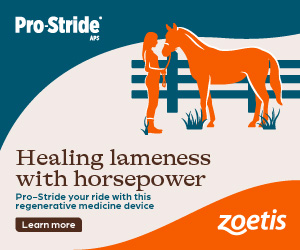Max Corcoran: How Much Is Too Much?

Max Corcoran has groomed internationally at the highest levels of equestrian sport for nearly two decades. She worked for the O’Connor Event Team for 11 years and has served at multiple Olympic Games, World Championships, Pan American Games and countless CCIs across the U.S. and Europe. She now lives in Ocala, Fla.
By Max Corcoran
We are unbelievably lucky. In our lifetime, we’ve seen horses achieve back-to-back gold medals in two disciplines with La Biosthetique-Sam with Michael Jung and Valegro with Charlotte Dujardin. Almost three, because Big Star with Nick Skelton was pretty close.
It has been a very long time since a U.S. team horse has been around for two major championships in a row. Our attrition rate at the upper levels in the U.S. is enormous. And the lower levels too – the horses start to get hurt at lower levels making it harder to manage them at the upper levels.
Why?
Is it because they are competed too much, they don’t get enough time off, or the ground and footing isn’t good enough? It’s probably all of the above.
But this is far from just a high performance problem. This is a discussion at every level and there seems to be a real lack of knowledge when it comes to horsemanship and competition planning.
The competition calendar gets longer and longer each year with more opportunities to compete. I find that eventers are competing their horses too much. It’s now called the “short format” and since there are no roads and tracks and steeplechase, people are thinking they can compete a lot more. On the contrary, it’s actually harder on the horse. There are more jumping efforts in a row with less galloping breaks in between. Those galloping breaks are where the horses can catch their breath.
Just because your horse isn’t lame doesn’t mean he doesn’t require time off.
The show jumpers typically went by the rule of thumb of “two weekends on, one weekend off”, but there was a study recently that showed that since jumpers are more like weightlifters than runners, it actually takes even longer than that for the horses that are giving 100 percent to recover.
It’s important to remember that horses get hurt when they get tired. Their footfalls are not quite correct and they don’t step as well because they’re sore or tired and they aren’t as clever on their feet. There are injuries we can’t see. There’s cartilage damage that’s being done and tiny little tears to soft tissue structures. Just because your horse isn’t lame doesn’t mean he doesn’t require time off.
Instead of saying, “My horse is sore,” find out why. We need to know what the cause is. Listen to your horse. Is he or she hanging on one rein? Drifting over the jump? The horses don’t have a choice which saddle is put on their backs or how much turnout time they get. They don’t get to tell us when they’re tired or they’re sore. Whether it’s nutrition, tack fit, blanketing, turnout, shoeing, fitness or calendar planning, it’s our responsibility to ensure that our horses are cared for as well as they can be.
Especially at the lower levels, people are riding every day and competing three and four weekends a month, and the horses aren’t able to recover.
Horses get a lot of overuse injuries just like people. If you run two miles every single day you’re going to manage it but things are going to bother you, whether it’s just a blister or a muscle, and you’re going to compensate. The same thing goes for when our horses get sore every day when they’re training. They need to have a time when nothing is asked of them – hopefully out in the field and they can rest and recover.
Especially at the lower levels, people are riding every day and competing three and four weekends a month, and the horses aren’t able to recover. Calendar planning is crucial to avoid running the horses too much. What is your goal? Pick your goal event and work backwards from there, planning what fitness work, practice, and lead-up competitions you’ll need to reach your goal competition. Then once you reach that big event, the horse should ideally have at least a month off afterwards.
The other thing is that the humans need to be fit as well. That’s a really big deal because there’s nothing more distressing than a tired horse at the end of a course and the rider cannot help them. When the rider is as exhausted as the horse, that’s dangerous. Or there are riders that I know that are physically bigger than others and still fantastic riders, and they buy the appropriate horse for them. Do what you can.


